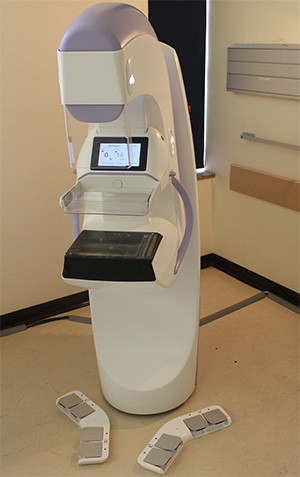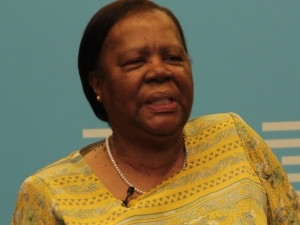
Cape Town-based medical technology company Cape Ray has designed and developed a machine that it says will provide a breakthrough in breast cancer diagnosis in SA.
The R30 million device, called the Aceso machine, was funded by the Industrial Development Corporation and allows for the instant detection of even the most microscopic cancer cells.
Minister of science and technology, Naledi Pandor, and minister of economic development, Ebrahim Patel, officially unveiled the Aceso machine at Cape Town's Groote Schuur Hospital last week.
According to Cape Ray, the machine, which is undergoing a testing phase at Groote Schuur Hospital, is a world-first imaging system that combines mammographic and ultrasound technologies. This does away with the need for multiple screening tests, particularly when analysing dense breast tissue.
The company adds that with the machine, for the first time, digital mammography and ultrasound technology have been combined in a single screening unit to cut the time for the accurate early diagnosis of breast cancer.
According to the Department of Health, the incidence of breast cancer among South African women is increasing and it is one of the most common cancers among women in the country. It is the most prevalent cancer among white and Asian women, and the second most common cancer among black and coloured women, the department adds.
Early detection of the condition can lead to effective treatment and a positive prognosis, it notes, pointing out that about 90% of patients survive for many years after diagnosis when breast cancer is detected at the early stages.
Cape Ray says while one in eight women in SA are susceptible to developing breast cancer, a more alarming figure is that 40% of these have dense breast tissue, which makes multiple, often painful screenings both difficult and costly, as well as time-consuming.
Very often, women go for a single screening and receive a negative result yet, without a more in-depth scan of the deep tissue, may remain vulnerable to the disease, it points out.
The home-grown Aceso machine seeks to do away with the need for multiple screening tests, particularly in women with dense breast tissue.

"I think the development of this particular machine that has been designed to assist women get a better diagnosis of breast cancer - recognised as a huge public health problem - is very exciting," said Pandor. "The fact that it's a team working in South Africa developing what has the potential to become a global healthcare product is an excellent story for our country," she added.
"This machine will not only provide opportunities for better healthcare but it will provide employment opportunities for the country," Patel said. "I'm excited about the potential this holds for economic development. This shows that innovation can address healthcare problems and is a demonstration that South Africa has smart ideas for the world."
Patel added that what is significant about the machine is that it combines two imaging modalities in one package. "Globally, the breast imaging market is worth R40 billion to R50 billion per annum and if we can take a South African technology that provides a better quality of life for our citizens, and it conquers global markets, then it can create jobs for our country."
Dr Kit Vaughan, chief executive of Cape Ray, says the machine would be tested further before it is awarded the CE mark that would allow it to be marketed in Africa and Europe. It would also need to be approved by the Food and Drug Administration to be marketed in the US.
"With this machine, you can perform the mammographic and ultrasound functions at the same time," he says. "Not only do you save time, but you don't have to have two machines, so you save money too. The key about this technology is it can be widely used to reach a large number of people, so it is ideal to use in a public healthcare setting," Vaughan concludes.
Share